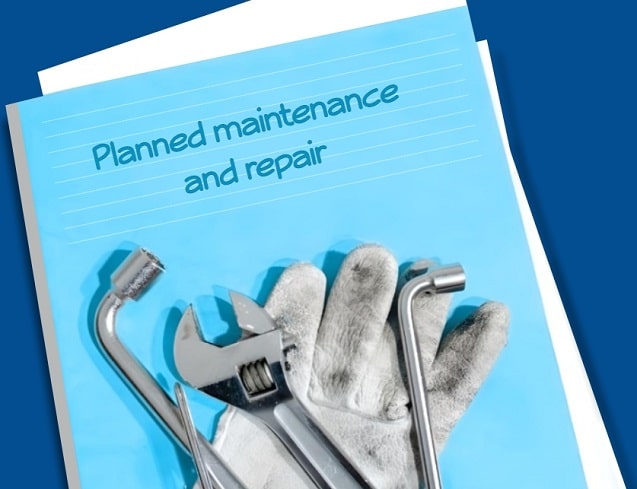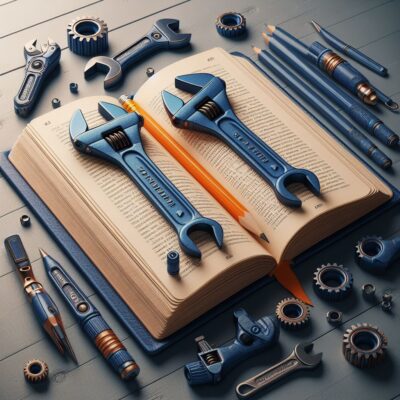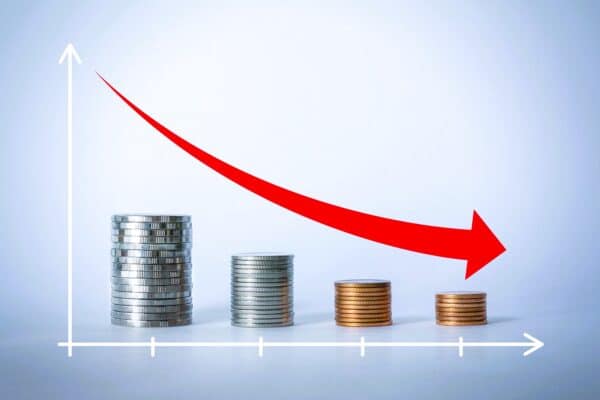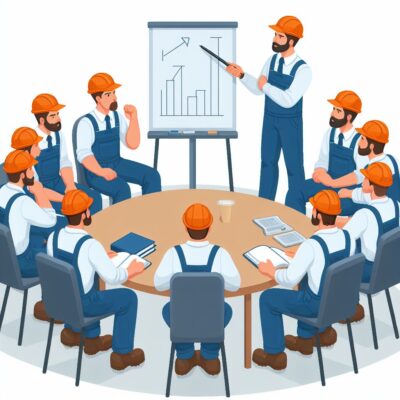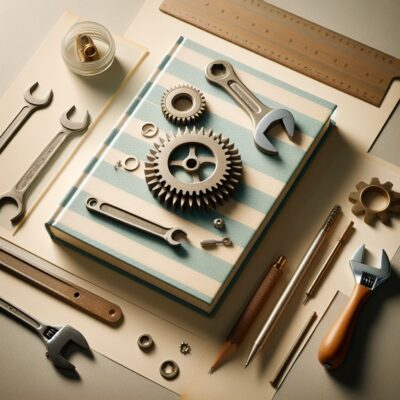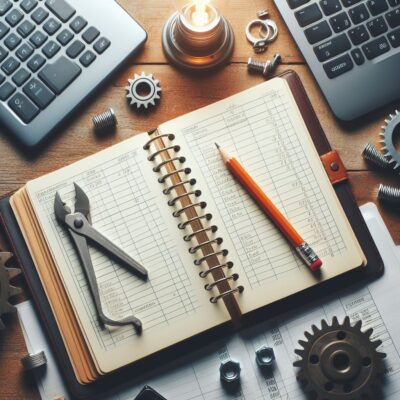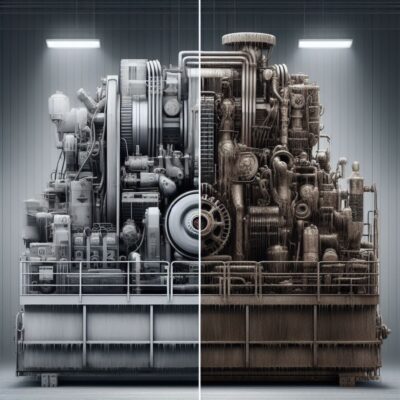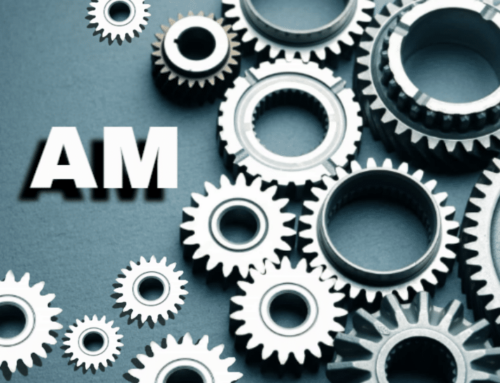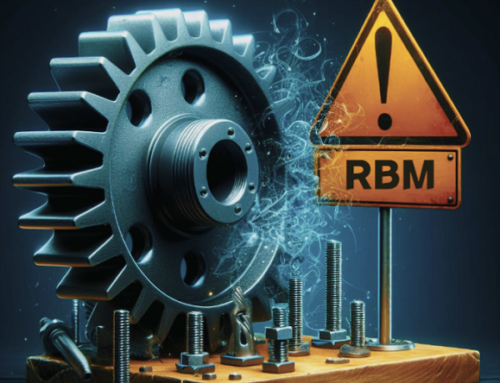Planned maintenance and repair
What you read in this article:
Planned maintenance and repair
Benefits of planned maintenance and repairs
Disadvantages of planned maintenance and repairs
Planned vs Unplanned Maintenance
Reducing planned maintenance and repair costs
How to train the workforce to perform planned maintenance and repair
Equipment that requires planned maintenance and repairs
How to plan planned maintenance and repairs
Solutions to improve the management of planned repairs and maintenance
The difference between planned and preventive maintenance
Ways to improve planned maintenance and repairs in facilities
Planned maintenance and repair refers to a set of activities that are carried out regularly and preventively to maintain and optimize the performance of various equipment, buildings and systems. In this method, repairs and maintenance are carried out based on a specific schedule and independent of the occurrence of failures.
Planned maintenance begins with a problem and identifies the materials, tools, and tasks necessary to work on the problem. The planning process includes inspection, part ordering, process description and work prioritization. These responsibilities rest with the maintenance scheduler. A planned Maintenance and repair schedule for a facility may include scheduling, but sometimes scheduling is done separately through a maintenance schedule.
The main purpose of planned maintenance and repairs is to determine what work should be completed and how it should be done, or in general, it can be said that its purpose is to prevent breakdowns and reduce the risks of sudden equipment stoppage. By performing regular and preventive repairs and maintenance, the useful life of the equipment increases and the possibility of breakdowns and unexpected stops is reduced.
-
Planned maintenance workflow:
The workflow for planned maintenance consists of several steps, which we will mention below:
- Identify the problem and create an action plan:
Planned maintenance begins by specifying the scope of work to be completed. This is often done in response to a work order, although it may also be based on a recurring schedule. In both cases, accurate information is essential. The operator or supervisor who detects the problem must provide the correct information to the maintenance scheduler. This information includes details about the problem, the asset in question, and any additional problems that may be associated with it. - Inspect the property and the location where the work will be done:
After gathering all the necessary information and pinpointing the problem, the maintenance planner outlines the details of what needs to be done. This includes the scope of work, tools required and whether replacement parts or special materials are required. In addition, workplace inspection is very important. - Order the necessary parts and prescribe a process to complete the job:
It is also important to detail the procedures required to successfully complete the task. Things like shutdown procedures, access requirements, and safety precautions are all critical to completing a maintenance job, and it’s important that these considerations are identified during the planning phase. - Add a priority level to the task sequence:
Once the work is determined, it should be prioritized and any necessary materials should be ordered. Planned maintenance and repair should perform these tasks to ensure that the work is ready to be performed after the schedule. Assigned priority levels may be low, medium or high:- Low: Tasks that are not time sensitive or do not involve critical equipment.
- Moderate: Time-sensitive preventive maintenance tasks performed on critical equipment.
- A lot: emergency and urgent work.
When assigning priority to maintenance tasks, planners must consider the importance of the equipment, the hazards these tasks treat, and the resources currently available.
- Schedule and complete planned maintenance and repair:
Once the planning process is complete, the scheduling phase begins. The maintenance planner may do the planning or a separate planner may take over. Maintenance scheduling is a separate process from maintenance planning, but the two rely heavily on each other to ensure that preventive maintenance is carried out successfully.
-
Benefits of planned maintenance and repairs:
- Increasing the useful life of equipment: with regular repairs and preventing sudden breakdowns, the useful life of equipment and systems increases. This helps to save costs and time related to equipment repair and replacement.
- Reducing the possibility of sudden stoppage: By performing regular maintenance and repairs, the possibility of sudden stoppage of equipment is greatly reduced. This causes no interruption in activities and reduces negative effects on production or services provided.
- Improved performance and efficiency: Equipment and systems that are regularly maintained and repaired perform better and provide higher efficiency. By performing periodic repairs and necessary updates, hardware and software problems are fixed and lead to increased performance and productivity and reduced operational costs.
- Increased safety: Equipment is safer when it is regularly inspected and repaired. By applying security updates and regular testing, potential risks and mishaps related to equipment malfunctioning are reduced.
- Update and optimization: In the process of planned maintenance and repairs, there is an opportunity to update and optimize equipment and systems. These measures can improve the performance, efficiency and facilities of the equipment and bring more efficiency.
- Reducing costs: By doing planned repairs and regular maintenance, the costs of emergency and sudden repairs are reduced. Timely diagnostics and repairs fix small problems and prevent major and costly breakdowns.
-
Disadvantages of planned maintenance and repairs:
- Financial costs: planned repairs and maintenance incur costs. This includes the cost of repairs, spare parts, software updates and hiring a technical team. Some organizations may not be able to pay the necessary costs and this can lead to delays in repairs and reduced efficiency of equipment.
- Time Required: Performing planned maintenance and repairs requires time and effort. This process may require stopping and suspending normal business activities in order to carry out repairs, which can lead to project delays and reduced productivity.
- Complexity of management: planning and managing planned maintenance and repair requires careful planning and coordination between teams and activities. Coordination between schedules, provision of spare parts, hiring of technical team and management of financial resources can lead to complications.
- Need for proper planning: To carry out planned maintenance and repairs effectively, there is a need for proper and accurate planning. In case of lack of proper planning, repairs may be delayed and a favorable result may not be obtained.
- Risks due to errors: If repairs and maintenance are performed incorrectly or incompletely, serious risks may be introduced to devices and systems. Mistakes in repairs can cause further damage to the equipment and also increase the possibility of creating security problems.
In general, planned maintenance and repair has its advantages and disadvantages. Performing regular and correct repairs and maintenance can help to improve the performance and useful life of the equipment, but it requires costs, time and effective management.
-
Planned vs Unplanned Maintenance:
Obviously, the opposite of planned maintenance and repair is unplanned maintenance and repair, and it’s generally preferable to have a higher percentage of scheduled tasks. Unplanned work is done in two different ways, including emergency and so-called “free effort”.
- Emergency maintenance: Emergency maintenance often occurs when critical pieces of equipment break down. In most cases, maintenance teams want to minimize the amount of emergency maintenance required on their facilities.
To minimize emergency maintenance, maintenance teams can:
- Implement an effective preventive maintenance program.
- Improve existing PMs.
- Use predictive analytics to focus on key maintenance tasks.
Tip: While preventive maintenance is generally preferred, sometimes disruptive maintenance is best for some non-critical assets, so unplanned work isn’t always a bad thing.
- Free effort maintenance: Any non-emergency maintenance work that is performed without prior planning is called free effort maintenance (also known as minor maintenance). Effortless tasks are usually simple and may not require much planning. However, sometimes maintenance technicians find and fix the problem without having the necessary tools or parts available on site. It can turn into the same types of waste as emergency work, such as:
- Time taken to retrieve required equipment or replacement parts.
- Time spent on LOTO procedures (hard when equipment operators don’t expect it).
- The possibility of servicing equipment too much.
- Task delays the completion of work orders that have already been scheduled.
As such, these tasks should be minimized. At the very least, it should be limited to low-risk tasks that don’t require much planning anyway.
-
Reducing planned maintenance and repair costs:
To reduce the costs of planned maintenance and repairs, you can consider the following measures:
- Regular and preventive planning: Regular and preventive planning for repairs and maintenance can help identify problems early and prevent serious breakdowns. By carefully planning the timing of repairs and maintenance, sudden and emergency costs can be reduced.
- Education and awareness: Improving the knowledge and awareness of the technical team and related personnel about the correct methods of repairs and maintenance can help reduce costs. With proper training, errors in repairs are reduced and the technical team is generally better equipped.
- Use of original and authentic spare parts: Using original and authentic spare parts instead of low-quality and counterfeit parts can reduce repair costs. Original parts usually match the systems exactly and last longer.
- Use of repairable equipment: At the time of purchasing equipment, choosing equipment that is highly maintainable can reduce costs. Choosing equipment with the possibility of quick separation and replacement of defective parts can reduce the time and cost of repairs.
- Use of smart technologies: Applying smart technologies, such as failure prediction and monitoring systems for early detection of problems and preventive measures can reduce repair costs. By using these technologies, it is possible to optimize the repair time and achieve better performance of the equipment.
- Cooperation with suppliers and technical service companies: Establishing direct cooperation with suppliers can help reduce maintenance costs. This cooperation can include long-term support, maintenance and service contracts with reputable suppliers and companies. This can reduce repair costs and give you the confidence that your equipment is being serviced by experienced people using original parts.
- Accurate warehouse management: Optimum management of spare parts and consumables can reduce repair costs. By keeping the right inventory and the right level of parts and consumables, it is possible to reduce additional costs due to the urgent purchase of spare parts.
- Evaluation and continuous improvement: By periodically evaluating performance and maintenance costs, weaknesses and opportunities for improvement can be identified and necessary improvements can be implemented. This includes improving processes, using better equipment, training personnel and improving productivity.
- Human resource management: Productivity and human resource management can continuously reduce maintenance costs. This includes proper allocation of human resources, resource planning and training and upgrading of personnel skills.
By following these steps, you can minimize the costs of scheduled repairs and maintenance. Of course, each specific organization and industry has its own needs, so you may need customized approaches to reduce costs.
-
How to train the workforce to perform planned maintenance and repair:
You can use the following methods to train the workforce to perform planned maintenance and repair activities:
- Internal Training: Creating an internal training program for your workforce is an effective strategy for transferring knowledge and skills. This program can include educational classes, educational videos, workshop sessions or hands-on workshops. In this program, teach your workforce the concepts of maintenance and repairs, processes, methods, tools and equipment needed for equipment maintenance.
- Specialized training: If there is special equipment in your organization, you may need specialized training. In this case, you can ask for help by preparing specialized training courses from companies or expert consultants. These courses can include training in specific software, specific equipment, or complex maintenance procedures.
- Online Educational Resources: Today, online educational resources are abundant. You can use educational videos, online courses, webinars and other resources on the Internet. Some online training platforms can even offer customized training packages for your organization.
- Practical Training: Practical training and hands-on experience in the workplace will help your workforce apply the skills they have acquired in theoretical training. It includes practical guidance, hands-on exercises and learning from hands-on experience in maintenance and repairs.
- Multi-specialty work teams: The formation of multi-specialty work teams consisting of members with different specializations and experiences in the field of maintenance and repairs can help to share knowledge and experiences among team members and increase interaction and joint learning.
- Feedback and evaluation: To achieve the best results from training, it is very important to constantly evaluate and give feedback on the performance of your workforce. Positive feedback about their progress and strengths, and constructive feedback about their strengths and weaknesses can facilitate improvement and improvement.
- Educational events: holding educational events such as conferences, seminars, discussions and experimental sessions can be an opportunity for training, networking and sharing knowledge and experiences. At these events, you can invite professional speakers and respected experts to provide new information and give your workforce the opportunity to learn from leading experts.
Finally, the most important point in training the workforce to carry out planned maintenance and repair activities is continuity and continuity of training. It is better to provide these trainings continuously and according to the changes in technology and the needs of the organization.
-
Equipment that requires planned maintenance and repairs:
Equipment that requires planned maintenance and repair may include:
- Computer systems: This includes servers, desktop computers, laptops, tablets and other devices used in the organization. These systems require periodic maintenance and repairs, including software updates, data backups, repair of serviceable parts, and hardware and software troubleshooting.
- Computer networks: Computer networks include network devices such as routers, switches, firewalls, and network cables. Their maintenance and repairs include configuring and updating network equipment, fixing communication and security problems, and network testing and troubleshooting.
- Electronic equipment: This includes electronic devices such as office machines, communication devices (telephones and faxes), audio and video equipment (projectors and cameras) and other electronic equipment in the organization. These equipment need maintenance, cleaning, repairs and parts replacement.
- Mechanical equipment: This includes mechanical devices such as industrial machinery, construction equipment (elevators and ventilation systems) and transportation devices (vehicles and forklifts). These equipment require periodic maintenance, troubleshooting and repairs according to the manufacturer’s guidelines and instructions.
- Electrical equipment: This includes electrical equipment such as electrical systems, switchboards, generators, and lighting equipment. These equipment require maintenance and repairs, including testing and troubleshooting systems, replacing damaged parts, and checking wiring and electrical connections.
- Special hardware and software equipment: Some programs and systems require special equipment that requires special expertise and technical knowledge for their maintenance and repairs. This may include advanced network equipment, specialized data processing systems, large servers, test and measurement devices, and other specialized equipment.
In general, planned maintenance and repairs require regular planning, forecasting and planning. Also, technical team or skilled technicians may be needed to perform these activities and fix technical problems.
-
How to plan planned maintenance and repairs:
To schedule planned maintenance and repair for your equipment, you can follow the steps below:
- Equipment identification: First, make a list of your equipment and identify them. This includes physical equipment, systems, machinery, tools, and anything that needs maintenance and repair.
- Determining the processes: Determine the maintenance and repair processes for each piece of equipment. This includes regular checks and inspections, replacing parts, cleaning and maintaining performance, updating software and systems, etc. Also, the repair process should be specified in case of failure.
- Scheduling: It is important to plan a proper schedule for carrying out maintenance activities and planned repairs. Based on the beginning and end of the useful life of the equipment, it is recommended to set a periodic schedule for each activity. You may need annual, monthly, weekly or even daily seasonality.
- Allocation of resources: Allocate the required resources to carry out planned maintenance and repairs. This includes labor, spare parts, required tools and equipment, storage areas, and everything else needed to carry out the activities.
- Registration and follow-up: Create a system for recording and registering activities to monitor and follow up maintenance activities and planned repairs. You can use existing maintenance and repair management software or set up a simple system such as planning in an Excel table.
- Workforce Training: Ensure that the workforce responsible for performing planned maintenance activities has the necessary training and knowledge. It is important to provide regular training to the workforce and familiarize them with up-to-date maintenance and repair processes and methods.
-
Solutions to improve the management of planned repairs and maintenance:
To improve the management of planned maintenance and repairs, you can use the following solutions:
- Create detailed planning: Detailed and comprehensive planning for repairs and maintenance can help improve performance and reduce costs. This planning includes scheduling, required resources, spare parts and preventive plans.
- Use of CMMS maintenance and repair management system: Smart maintenance and repair software (CMMS) is a software that centrally manages equipment information, maintenance planning, repair history and other details. The use of CMMS can bring a significant improvement in the management of repairs and planned maintenance.(Click to learn more)
- Prioritization of repairs: By checking the importance and necessity of repairs, you can plan repairs based on certain priorities. Prioritization based on the importance of equipment performance, potential risks, and financial impacts can significantly improve repair management.
- Use of data and statistics: Using data and statistics in the decision-making process can help identify patterns, recurring problems, and optimize maintenance activities. By analyzing data and statistics, you can make better decisions about scheduling repairs.
- Coordination between teams: Coordination between different teams, such as repair teams, suppliers, and operations managers, can help improve maintenance management. Effective communication and collaboration between teams can prevent mistakes and delays caused by lack of coordination.
- Preventive and regular maintenance: Implementing preventive and regular maintenance programs will help planned maintenance and repairs to prevent major problems and breakdowns and reduce the need for emergency repairs.
- Training and Awareness: Providing proper training to maintenance teams on better maintenance management techniques and methods can lead to continuous improvement. Knowledge of new technologies and better methods can improve team performance and efficiency.
- Resource Planning: Investigating and optimizing the resources needed for repairs and maintenance, including manpower, spare parts and equipment, can improve the planning and execution of repairs and maintenance. In addition, it is necessary to carefully select suppliers and suppliers of spare parts in order to effectively supply resources.
- Feedback and evaluation: Collecting feedback from maintenance teams and customers, and conducting periodic evaluations to review maintenance performance and performance can help identify strengths and weaknesses and continuously improve the planned process.
- Use of new technologies: The use of new technologies such as Internet of Things (IoT), data analysis, artificial intelligence and automation can lead to more accuracy and efficiency in maintenance management. These technologies can automatically collect equipment information and help diagnose problems and perform preventive maintenance.
Finally, to improve the management of planned maintenance, it is important to focus on processes and continuous improvements. According to the specific needs and conditions of your organization, you can choose appropriate solutions.
-
The difference between planned and preventive maintenance:
Planned work can be divided into two main categories: preventive maintenance and planned maintenance.
Preventive maintenance and repairs includes all the work that is done not in response to a failure, but to prevent future failures.(Click for more information) while planned maintenance and repair as above It is work that must be done as a result of wear and tear where the equipment has not yet broken down and can still operate reliably until the maintenance department is equipped with the necessary materials, labor, and shop space to properly handle this. Start repairs.
-
Ways to improve planned maintenance and repairs in facilities:
Planned maintenance and repair is most effective when done well. Some of the ways your facility can improve maintenance planning include the following:
- Improved event reporting: Any maintenance planning process is only as good as its information, which means event reporting should be as complete and up-to-date as possible. Whenever something happens in the facility, personnel should be encouraged to report it. report it, even though they may technically be guilty of it.
One way to facilitate incident reporting in your facility is to make it a penalty-free process. This can be done by anonymizing work requests.
Additionally, encouraging people in other departments to report breakdowns or equipment problems can help round out your incident report overall.
Note: However, coordination between maintenance and operations is part of maintenance best practices, and the two departments must be in constant contact. - Optimize existing PMs: Preventive maintenance and repairs offer higher cost savings but can still lead to waste if not optimized. Part of this waste includes time spent scheduling work that may not do anything. do not do
Preventive maintenance that does not provide real benefits to your facility’s equipment should be eliminated. On average, this can mean eliminating about 30% of PMs, which can help your planners use their time more effectively.
In addition, PM optimization can improve overall equipment reliability, which means less time is spent planning maintenance tasks after a breakdown. - Control “free-effort” work: As mentioned earlier, free-effort work should either be carefully defined or minimized. If operators or technicians notice that there is a problem with a particular piece of equipment, they should be encouraged. to complete a work request or to repair it themselves.
The exception to this is if the work does not require specialized equipment, tools or methods to complete. Typically, freelance work should be limited to tasks that can be done with the tools already at hand and that will take no more than half an hour to complete.
In addition, focusing on key performance indicators can further encourage maintenance staff to limit unplanned work. Planned Maintenance Percentage (PMP) is the main key indicator to track in this case. - Consider workers and backlogs: When your maintenance planners work depends on a variety of factors, including your current capacity and backlog. For example, if your crew consists of 15 technicians, each working 40 hours per week, your maintenance planner should plan for a total of about 600 work hours.
Some of this work should involve recurring PMs, and the current backlog may fill some of that time as well. A large amount of work must be prioritized - .Optimize MRO inventory: MRO inventory is the inventory that is required to assemble and sell the finished product but is not built into the product itself. For example, gloves are considered for packaging an MRO product. Even office supplies such as pens, highlighters and paper are also included in this group.
Planned maintenance should consider MRO inventory items. If the MRO inventory is not optimized, it can mean that the scheduler has to factor in more hours per work order. Additionally, it may mean delaying some work until suitable replacement parts can be obtained.
To support recurring PMs and overall maintenance efficiency, MRO inventory must be well organized and properly stored. The maintenance planner must also be aware of how the facility’s inventory is performing in order to calculate lead times and other related factors. - Schedule recurring PMs through CMMS: Maintenance scheduling takes time. If this time can be reduced by automating some scheduling tasks, it can improve the efficiency and effectiveness of maintenance scheduling. help you
Using a CMMS to automatically generate recurring PM tasks can reduce your maintenance scheduling workload while supporting reliability in your facility.(Click for more information about CMMS software) - Track maintenance data: As you know, maintenance planning is only as effective as the information available. It is important to track maintenance data to ensure you have the information you need. Work order completion time, MRO inventory turnover, frequency of assigned tasks, and other criteria should be considered when planned maintenance and repairs.
As a result, planned maintenance is a key component of any facility’s maintenance process, and when well supported and properly implemented, can improve the overall quality of maintenance work.

